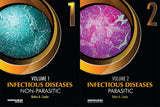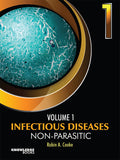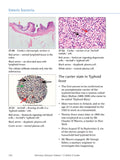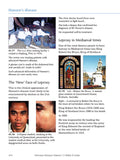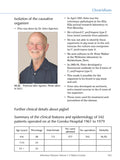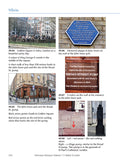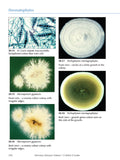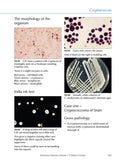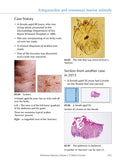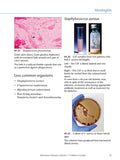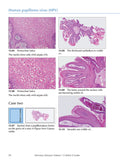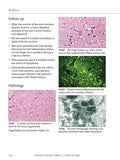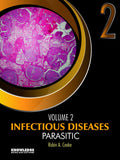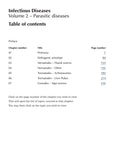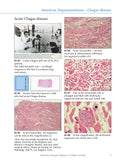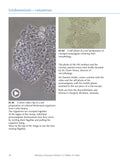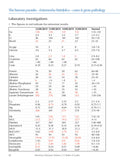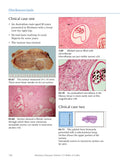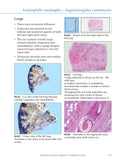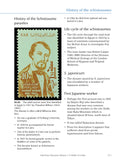Infectious Diseases Volumes 1 and 2 eBook Bundle
SKU / ISBN:
Author: Cooke, Robin A.
Please contact us for licensing of 11+ users
Click here to download the Infectious Diseases brochure
Introduction
This series is different from any other similar book currently on the market.
The images are of uniformly high quality, and the text is eminently readable.
It is a good reference text for trainees and practitioners in all fields of Medicine, Nursing, Medical Science, Allied Health.
The subject matter is the result of a professional lifetime from 1960, of collecting data and photographs of the medical records of patients, and the pathology from which they suffered.
The author has had a role in the diagnosis, and often the treatment, of many of the cases.
This increases the authenticity of the book.
Historical anecdotes about the diseases, and the people who described them, are liberally sprinkled throughout the book.
Many of the diseases are presented with photographs of the medical records of the cases used by the doctors to define the diseases. For example:
- Kuru by Carlton Gajdusek, for which he was awarded a Nobel Prize.
- Amoebic meningitis by Malcolm Fowler and Rodney Carter.
- Q fever by Edward Derrick.
- Pigbel by Robin A Cooke.
Most textbooks show only the high magnification view of the organisms. This book shows how the pathologist examines the slides to ‘find’ the organisms.
Diseases that occur in specific areas of the world where they are endemic are illustrated.
Examples of these diseases when they occur in travellers or immigrants in a non-endemic environment. Under these circumstances, the medical practitioners of first contact have had no experience of these diseases, and therefore have difficulty in making a correct diagnosis.
Some technical aspects that have been included by the designer - an index is supplied after the Introduction.
By clicking on the topic to be examined, it immediately takes the reader to the topic.
At the end of the topic there is an icon to click that immediately returns the reader to the index.
There are a few short video clips of moving organisms.
INFECTIOUS DISEASES VOLUME 1: NON-PARASITIC
Chapter 01 – Virus infections
- 01 Meningitis
- 02 Molluscum contagiosum
- 03 Cytomegalovirus (CMV)
- 04 Arboviruses
- Dengue virus
- Ross River virus
- Murray Valley encephalitis virus (MVE)
- Japanese B encephalitis
- 05 Yellow fever
- 06 Hepatitis
- Normal liver
- Hepatitis B acute
- Hepatitis B cirrhosis and hepatocellular carcinoma (HCC)
- Hepatitis C
- 07 Adenoviruses
- 08 Measles
- 09 Rubella
- 10 Mumps
- 11 Varicella-zoster
- 12 Herpes zoster
- 13 Herpes simplex
- 14 Smallpox
- 15 Human papilloma virus (HPV)
- 16 Epstein-Barr virus (EBV)
- 17 Poliomyelitis
- 18 Rabies
- 19 Australian bat lyssavirus
- Hendra virus
- 20 Influenza
- 21 HIV/AIDS
- 22 SARS
- 23 COVID-19
- 24 Prions
- Cruetzfeldt-jacob disease (CJD)
- Bovine spongiform encephalopathy (BSE – mad cow disease)
- Variant CJD (vCJD)
- Kuru
Chapter 02 – Bacterial infections
- 25 Chlamydia
- 26 Leptospira
- 27 Rickettsia
- 28 Q fever
- 29 Staphylococcus
- 30 Streptococcus
- 31 Neisseria
- 32 Diphtheria
- 33 Listeria
- 34 Haemophilus influenzae
- 35 Klebsiella
- Donovanosis
- Rhinoscleroma
- 36 Helicobacter
- Pylori
- Heilmannii
- 37 Enteric bacteria
- Escherichia coli
- Shigella
- Salmonella typhi
- 38 Yersinia
- 39 Pseudomonas aeruginosa
- 40 Tuberculosis
- 41 Hansen’s disease
- 42 Atypical mycobacteria
- M. scrofulaceum
- M. ulcerans
- M. marinum
- M. avium-intracellularae complex
- 43 Clostridium
- 44 Treponema
- Syphilis
- Yaws
- Spirochaetosis
- 45 Bacillus
- 46 Brucella
- 47 Lyme disease
- 48 Melioidosis
- 49 Vibrio
- Vibrio cholerae
- Vibrio vulnificus
Chapter 03 – Fungal infections
- 50 Dermatophytes
- 51 Candida
- 52 Chromoblastomycosis
- 53 Sporotrichosis
- 54 Actinomyces
- 55 Histoplasma
- 56 Aspergillus
- 57 Mucor
- 58 Cryptococcus
- 59 Coccidioides
- 60 Rhinosporidium
- 61 North American Blastomycosis
- 62 South American Blastomycosis
- 63 Conidiobolus
- 64 Pneumocystis
Chapter 04 – Ectoparasites and venomous marine animals
- Millipedes
- Spiders
- Scabies
- Ticks
- Box jellyfish – Chironex fleckeri
- Fly – Musca domestica – maggots
- Fly – Dermatobia hominis
- Flea – Tunga penetrans
- Lice – Pediculosis pubis
- Lice – Pediculosis corporis
- Bug – Triatoma braziliensis
INFECTIOUS DISEASES VOLUME 2: PARASITIC
Chapter 01 – Protozoa
- African Trypanosomiasis – Sleeping sickness
- American Trypanosomiasis – Chagas disease
- Leishmaniasis – visceral
- Leishmaniasis – cutaneous
- Malaria – History
- Malaria – Case histories
- Malaria – Identification of species
- Malaria – Pathology
- Malaria – What does the future hold?
- Toxoplasmosis
- Sarcocystis
- Balantidiasis
- Giardiasis
- Trichomoniasis
Chapter 02 – Pathogenic amoebae
- The human parasite – Entamoeba histolytica
- Free living amoebae Naegleria fowleri (This is a presentation of the first cases)
- Acanthamoeba species – brain abscess
- Acanthamoeba species – corneal ulceration
- Balamuthia mandrillaris
- Size comparison between the four pathogenic amoebae –
- Acanthamoeba species
- N. fowleri
- E. histolytica
- Balamuthia
Chapter 03 – Nematodes – Filarial worms
- Filariasis – history
- Filariasis – species identification
- Filariasis – pathology (01)
- Filariasis – clinical features
- Filariasis – pathology (02)
- Rejuvenating an old pathology museum and creating a new one
- Something new in elephantiasis of the vulva
- Onchocerciasis
- Dirofilariasis
Chapter 04 – Nematodes – Other
- Pin worm – Enterobius vermicularis
- Whip worm – Trichuris trichiura
- Hookworm – Ancylostoma duodenale
- Ascariasis – Ascaris lumbricoides
- Trichinosis – Trichinella spiralis
- Eosinophilic meningitis – Angiostrongylus cantonensis
- Strongyloidiasis – Strongyloides stercoralis
Chapter 05 – Trematodes – Schistosomes
- Illustrative case histories
- Acute dysentery
- Acute hepatitis
- Chronic hepatitis
- Lung & megacolon
- Bladder – a problem diagnosis
- A variety of cases from different countries & involving different organs
- Testis
- Anus
- Rectum
- Colon - chronic & double pathology
- Do schistosomes cause cancer?
- Bladder low grade dysplasia
- Bladder high grade dysplasia
- Prostate cancer
- History of the schistosomes
Chapter 06 – Trematodes – Liver flukes
- Clonorchis sinensis
- Opisthorchis viverrini
- Fasciola hepatica
Chapter 07 – Cestodes – Tape worms
- Hydatid disease – Echinococcus granulosus
- Sparganosis
- Cysticercosis – Taenia solium
Licence Details:
Use is concurrent users – the actual number of users accessing the content at any one (1) time. For example, a single user is one concurrent user and for multiple use will be based on concurrent usage or log-ins. This is best managed by the library management or we can supply a DRM version to specify usage and rights. We provide an open PDF file and rely on the library’s user management system to manage access as required.
Licence purchase is for a single site with the specific number of users. A five-user licence is for a single site with a maximum of 5 concurrent users.
Licence time frame is 5 years with renewal. The licence will be renewed or stopped after 5 years.
User is defined as a log-in access at a particular time so 5 users are accessing at the same time.
- Format: Digital
- Pages: 896
- Series: Infectious Diseases
- Publication Date: 18/08/2022
- Publisher: Knowledge Books and Software
- Subject: Medicine
- Audience: Tertiary
























